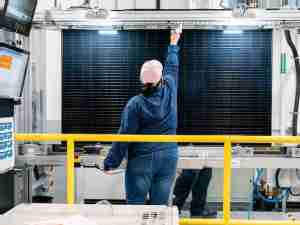U.K. factory production extended its record run in December, capping the strongest year since 2014.
Manufacturing rose 0.3 percent from November, the Office for National Statistics said Friday. Overall industrial output slumped a larger-than-forecast 1.3 percent after the closure of a key North Sea pipeline led to a steep drop in oil output.
Separate figures show construction output rose 1.6 percent and the trade deficit widened to 4.9 billion pounds ($6.7 billion).
Manufacturers are enjoying their longest expansion in three decades—output has risen for eight consecutive months—as strong global growth and the past depreciation of sterling boost exports.
Manufacturing in December was driven by output of ships, aircraft and cars. Factory output in 2017 rose by 2.8 percent.
The slide in total industrial production in December reflected the closure of the Forties Pipeline System for almost three weeks following the discovery of a hairline crack. Oil and gas extraction plunged 24 percent, the biggest drop since September 2012.
Export Surge
The latest batch of figures will have little effect on overall economic growth, which is estimated by the ONS to have picked up to 0.5 percent in the final three months of 2017.
Industrial production rose 0.5 percent in the fourth quarter instead of the 0.6 percent estimated last month. Construction meanwhile fell 0.7 percent rather than 1 percent.
Trade acted as a drag on growth in the fourth quarter, with the deficit in goods and services widening to 10.8 billion pounds from 7 billion pounds in the previous three months.
For 2017 as a whole, however, net trade made its first contribution to growth in six years after an 11 percent jump in exports saw the deficit narrow by 7 billion pounds to 33.7 billion pounds.
That trend is expected to continue in coming years, according to Bank of England Governor Mark Carney, who on Thursday described exporters as being in a “sweet spot.”







